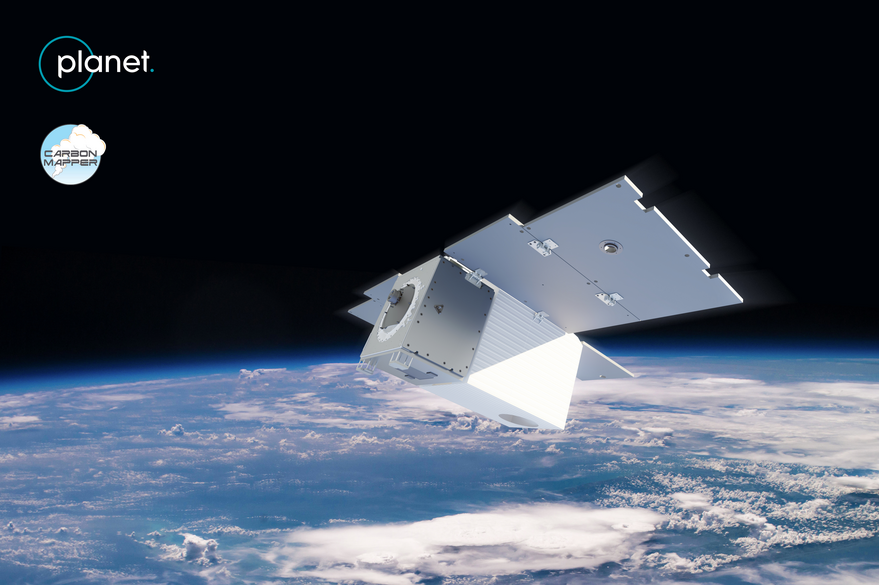TAMPA, Fla. — Planet’s first hyperspectral satellite is ready for launch to help push the Earth observation operator to profitability by early next year.
Tanager-1 has arrived at California’s Vandenberg Space Force Base ahead of a SpaceX rideshare mission that could take off as soon as July, the operator said June 6 amid earnings results.
Will Marshall, Planet’s co-founder, CEO and chair, told investors the 30-meter resolution satellite will augment its optical constellation by collecting data in more than 400 spectral bands to capture phenomena invisible to the human eye.
The San Francisco-based company announced a $20 million agreement in March to sell Tanager-1’s services to Carbon Mapper, a nonprofit seeking to deliver methane and carbon dioxide super-emitter data to decision-makers.
Marshall said Planet sees strong interest in hyperspectral data from governments and commercial areas such as agriculture and oil and gas, but stressed it is early days for the market.
“We think it’s an exciting area long term but it’s a nascent market,” he said in the call to discuss fiscal first-quarter earnings for the three months to April 30.
The contract with Carbon Mapper is also tied to milestones around the data Tanager-1 and follow-on hyperspectral satellites generate, Planet chief financial officer Ashley Johnson added, and so Planet does not expect to record revenue from the deal over the next couple of quarters.
Planet, which has previously outlined plans to build and operate two hyperspectral satellites initially targeting a launch in 2023, is the latest company seeking to forge a commercial market for hyperspectral services that have traditionally focused on the defense market.
Record revenues
Planet announced a record $60.4 million in revenue for fiscal Q1 2025, up 15% year-over-year and largely driven by government customers.
The U.S. National Reconnaissance Office recently renewed a contract to continue using Planet’s imagery services and data archive, Marshall said.
He said Planet also recently completed two seven-figure pilot programs for the Department of Defense, focusing on artificial intelligence data solutions, and expects to secure follow-on pilots.
“These pilots require board area monitoring, detecting and reporting,” he said, “and reflect a growing trend towards acquiring focused insights from our global data.
“We’re also pursuing additional larger pilots with other government agencies and believe our unique daily scan positions us favorably to win. We believe all of these pilots have the potential to convert into very large operational contracts over time.”
Planet also deployed a new software platform in April designed to merge Earth-observation datasets with analytics to help government and commercial customers analyze, stream and distribute imagery insights.
However, the company pointed to ongoing headwinds in the commercial market during its earnings results, mainly in the agricultural sector.
Commercial customers overall accounted for 22% of Planet’s total revenue for fiscal Q1 2025, down from 29% the previous quarter.
Marshall said the company aims to improve its performance with commercial customers by pushing for more partner-led services, pointing to a recent three-year contract with a Brazilian utility company using its data to monitor reservoirs and transmission lines.
Overall, Planet recorded an $8.4 million loss for Q1 2025 adjusted EBITDA — or earnings before interest, taxes, depreciation and amortization — compared with a $19.1 million loss for the corresponding period last year.
It is the fourth consecutive decrease in quarterly adjusted EBITDA loss, and Johnson said the company is on track to reach adjusted EBITDA profitability in fiscal Q4 2025.
The company expects to report between $59 million and $63 million in revenue for its next fiscal quarter, along with an adjusted EBITDA loss of between $7 million and $10 million.
Built in-house, Tanager-1 is set to be the second of Planet’s next-generation small satellites to take flight. It would follow the launch of the company’s higher resolution Pelican demonstrator in November, which shares the same platform.
Slated to join Tanager-1 on a Falcon 9 rocket are 35 optical Earth imaging satellites Planet calls SuperDoves for contributing to the company’s flagship daily, global monitoring service using more than 200 satellites in low Earth orbit.
Related
Read the original article here
